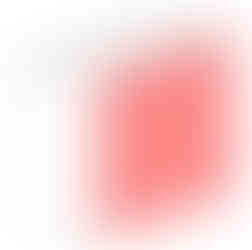Laundry Folding Station
- AureliaVining
- Sep 7, 2022
- 5 min read

Here we are, part two of our laundry room series, with our folding/storage unit. Where does your laundry end up when it comes out of the dryer? I feel like the couch is my transition spot from clean to folded. And then the put away part takes longer than I'd like to admit.
However, if there was a surface in the laundry room that was big enough to fold my laundry as soon as it came out of the dryer, my problems with two, three...and shamefully, even four days of folded clothes, piled on the couch would be over! This solution I'm sharing is too SIMPLE not to share. In just a few steps your laundry woes (and mine) could be solved. I'm talking, almost 5 feet of folding space, three storage spaces for baskets, and an open space underneath for whatever you need to store. It's a perfect laundry room fix that will transform your laundry process. Lets get started!
Materials you'll need:
- Sand paper 120, 220, 320 grit
- 1” Pocket screws
- 1” Finishing nails
- Wood Filler
- Primer & Paint
- #0000 Steel wool
- Stain & Polyurethane
-Contractors adhesive
- Tack cloth
- Micro-fiber cloth
- Paint brushes/rollers
Tools required:
- Miter saw
- Table saw (or Circular Saw)
- Drill with bits
- Sander
- Nail gun
- Pocket hole jig
- Level
- Clamps
- Corner clamps
- Speed square
- Safety protection
Wood needed:
- (2) 4’ x 8’ x 3/4” Plywood
- (3) 1” x 2” x 8’ Pine wood
- (1) 1 3/4” x 2’ - 1” x 8’ Pine wood butcher block
*Overall dimensions are: 4’ - 8” L x 2’ - 1” D x 3’ T
Step One_Cut, Sand, & Prime Pieces
Cut wood according to diagrams below. Once you have all your pieces, go ahead and do a light sand with 120 grit sandpaper on both sides of each piece, to include the 1"x2". Wipe clean with a micro-fiber cloth. Using a paint brush and roller, put two coats of primer on both sides of all pieces. When dry, sand lightly with 220 grit, wiping clean between coats. Refer to manufacturer‘s dry time instructions for best results before recoating. I use Zinsser BIN primers and they always work perfectly for me.

Cut list for 3/4" x 4' x 8" pieces of wood.
Cut list for 1 x2's and butcher block top.
Step Two_Pre Drill Pocket Holes
Use a pocket hole jig to make all the holes on (C) pieces only, I used one piece as a template and then transferred the hole placement to the other five (C) pieces to keep holes consistent. I placed three holes on both sides - one on both ends (about 1 1/2" from end), and one centered. The I placed two centered along one, 1' - 1" side. These two holes will help secure the back piece to the frame.

Pre drill pocket holes in all six (C) pieces, as shown.
Step Three_Assemble Pieces Cut From 3/4" x 4' x 8' Pieces
I used corner clamps to assemble these pieces and it made life easier, and helped keep my angles square. To get started, using 1“ pocket hole screws and speed square, attach one vertical (D) piece to one horizontal (C) piece. Make a square by attaching another Vertical (D) piece to the other side of the first (C) piece, followed by a second (C) piece to complete the square. Attach the four remaining (C) pieces to the sides of the box just made, top and bottom. Then attach the side (A) pieces using the pocket holes on the four (C) pieces placed previously. Stand the unit up right as seen below, align the back (B) piece (make sure its on the side of the frame where your pre drilled pocket holes are), attach the back with finishing nails along the frame of the assembled pieces. Lastly, Flip the unit upside down and align (E) pieces inside (A) pieces, attaching with carpenter adhesive and clamp till completely dry. While flipped over attach the last (12) 1“ pocket screws to the back piece (B).
*Make sure that all your pieces are oriented in the same direction, and all pocket holes are facing the bottom of unit when attaching (NOTE: During assembly process the unit is upside down, so all pocket holes should be facing up).
*Check your angles with speed square as you attach each piece. Adjust as needed before securing pieces together.
Ordered steps of assembly.
Step Four_ Attach Trim Pieces & Paint
Attach all pieces with finishing nails. Start by attaching the top (3‘ - 6“) piece, cutting the corners at 45 degrees. Attach the two side (2‘ - 10 1/4“) pieces, cutting the corners at 45 degrees to match the top corner angles. The rest of the pieces will not have 45 degree angles at the corners. The (3‘ - 3“) bottom piece goes on next, followed by the two vertical (1‘ - 2 7/8“) pieces. Once all the trim is attached, fill the holes made by the finishing nails with wood filler and lightly sand with 220 grit sandpaper when dry.
It's time to paint! Paint with at least two light coats of desired color, and a third if needed. As always, follow the recommendations for drying times on the paint label for the best results. I lightly sanded mine in between coats with 220 grit sandpaper (probably not necessary), but the finish was super smooth - totally up to you. I used Valspar Cabinet Paint in SW_Peppercorn with a semi-gloss finish.

Step Five_Cut, Route, Sand & Stain Butcher Block
Cut the butcher block to size. Make several passes, moving the blade down 1/2“ at time until the wood is cut all the way through. Keep the blade of the circle saw in the same groove while making passes. I used a Kreg Accu-Cut jig to keep my circle saw in the same location with each pass. The butcher block is heavy and I found this easier than trying to use my table saw.
Next, clamp the butcher block to a stationary surface so it doesn't move while you route the edges. Using a router and desired profile (I did a simple Chamfer edge), and route along edges. I only routed the two edges that weren't going to be against the closet and wall. After you have your profile cut, sand the butcher block using 220 grit sandpaper, followed by a 320 grit. Wipe clean with micro fiber cloth and tack cloth to remove all debris.
Finally, stain with your color of choice. Use the manufacturers recommended applicator for applying your product, apply second coat if desired. When dry, apply three coats of polyurethane, sanding lightly between coats. I used a steel wool #0000 to sand between poly coats. Remove all debris with a micro-fiber cloth and tack cloth before each new coat. When dry attach butcher block top to base using construction adhesive, applying directly to the frame and aligning the top with the back, and one side of base.
Routed and stained butcher block top.
Step Six_Style & Enjoy
Once the paint or stain is dry, style your new folding station with baskets and a hanging rack to make the most of your laundry room upgrade.

Install complete.

Original concept for laundry space.
We‘d love to see what you create - be sure to tag us on Instagram @reddesignedinteriors and #reddesignedtutorials #reddesignedfurniture.
Need more direction? Check out our complete walkthrough with detailed diagrams, cut lists, for further instructions https://www.reddesignedinteriors.com/product-page/laundry-folding-cabinet




































Comments